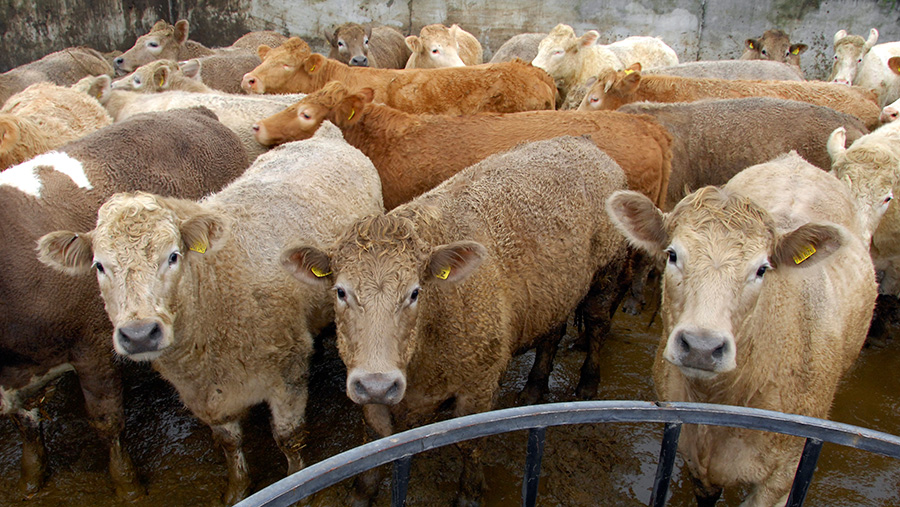Farm census reveals sharp rises and falls within sectors
 © John Eveson/FLPA/imageBROKER/REX/Shutterstock
© John Eveson/FLPA/imageBROKER/REX/Shutterstock Defra’s annual survey of agricultural holdings in England has highlighted the continuing swing away from winter-sown barley, a marked rise in maize production and pig numbers breaking the four million mark.
Overall, the census, conducted in June each year, covered 25,000 commercial holdings and showed the used agricultural area (UAA) at 9.2m hectares.
Of this, 5m hectares is in arable production (54%) and 3.8m hectares (41%) is permanent pasture.
See also: What is lasting power of attorney and why is it so important?
Sector-by-sector breakdown
Pigs
The pig herd broke the four million mark after a 1.7% year-on-year rise in numbers over the first half of 2018. But the figure masks a mixed picture across the herd.
Although most weight ranges of fattening pigs fell, an overall increase of 2% was recorded, taking the herd numbers to 3.6 million head.
The increase was due solely to a 9% jump in piglet numbers under 20kg. The breeding herd stood at 408,000 head, down 2%, with all females declining to 327,000 head.
Within the overall female statistic there was a 3% drop in sows in pig, at 232,000 head, and a 2% rise of gilts in pig.
Cattle
The total cattle herd remained relatively stable at 5.4 million head, with only a 0.8% reduction compared with the same stage a year earlier.
While the dairy breeding herd stood at 1.14 million head – down by just 0.6% on 2017, heifer numbers (aged one to two years) decreased more sharply, falling 7.6% to 314,000 in June 2018.
The reverse trend was seen in the same age bracket (one to two years) of the female beef breeding herd, which saw a rise of 3.9% to 478,000 head this June.
However, the total female beef breeding herd registered a small fall of 1.3% to 712,000 head.
Sheep
The sheep and lamb flock stood at 15.7 million head in June 2018, marking a slight fall of 0.7% on June 2017.
The most marked change was in breeding ewes intended for slaughter – up by 10.2% compared with the 2017 figure.
As farmers tightened up flocks in the dry weather, the number of ewes intended for first time breeding fell by 6.5% year-on-year.
The lamb crop fell slightly (down 1.4%). In numbers that represents a reduction of 112,000 head from 8 million in 2017 to 7.9 million this June.
CROPS
The land area under arable showed a small increase of +1.1% to 3.96m hectares.
Cereals
The majority of the arable area (2.7m hectares) was drilled with cereals and, of this, wheat predominates at 1.67m hectares – up by 1% from 1.65m hectares in 2017.
The barley-sown area showed an overall drop of 2% between June 2017 and June 2018 to 0.83m hectares.
The switch from winter to spring barley continues, with a 4.9% reduction in winter-sown crops compared with a 0.1% increase in the spring barley area.
The biggest rise in cereals though was seen in oats which at 1.34m hectares rose by 11% year-on-year.
Oilseeds
The total land area under oilseed crops rose by 40,000ha (7.1%) to 589,000ha in June 2018.
Oilseed rape accounted for 563,000ha of this (up 7.6%). However, this was measured against the abnormally low figure for 2017.
Within this overall figure, winter varieties accounted for 555,000ha (up 7.6%) and spring just 8,000ha (down 7.7%) of the total in June.
The biggest jump of any crop in percentage terms was seen in borage, for which the area almost doubled (+90%) to 2,000ha.
Potatoes
The potato crop showed little area change, remaining at 107,000ha in June 2018, up just 0.7% on year-earlier figures.
Sugar beet
The sugar beet area increased by about 5,000ha (4.5%) over the 12 months from June 2017 to June 2018 to stand at 116,000ha this summer.
Other crops
The area down to other crops remained relatively stable at 589,000ha, down 1.1%, but maize and beans showed dramatic changes.
The fodder maize area jumped by 20% from 118,000ha in 2017 to 142,000ha in June 2018.
Grain maize also rose sharply (up 27%) to 10,000ha for the 2018 crop.
Maize for AD plants only increased by 0.9%, but now covers 58,000ha.
In stark contrast to the rise in maize, field beans declined from almost 189,000ha in 2017 to 155,000ha in 2018, a drop of 17.2% over the 12 months.
